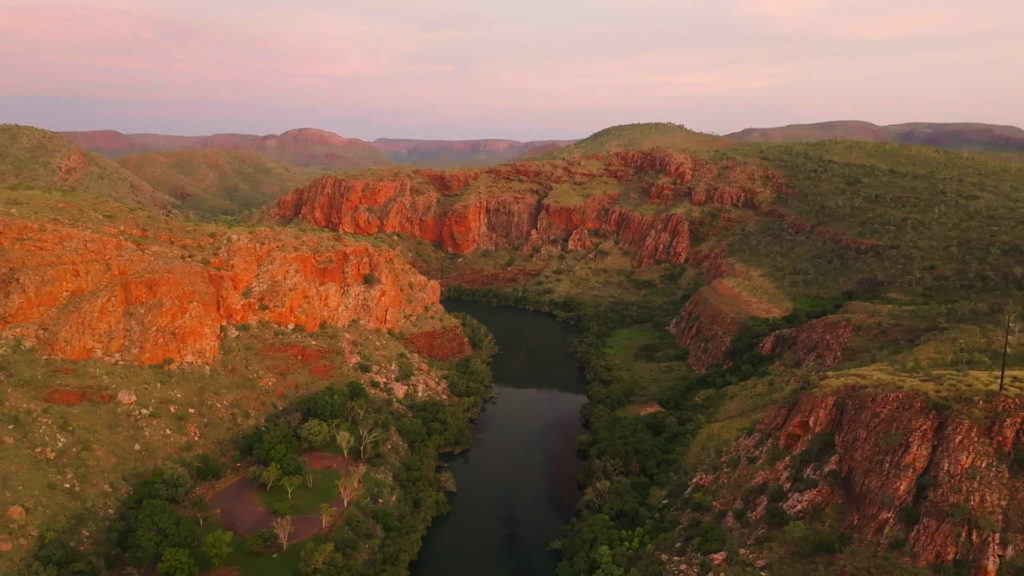
Australia’s Indigenous groups are taking equity stakes in the growing renewable energy industry as they seek to protect their community interests, prevent encroachment and obtain a bigger share of the profits in what is built on their lands.
Aboriginal groups have so far had limited say in mega-projects rolled out across Indigenous lands, at times eroding or destroying traditional landscapes, as witnessed by Rio Tinto’s demolition of sacred rock shelters three years ago.
But several Indigenous groups have recently struck major renewable energy deals that make them shareholders, in partnerships that strengthen their involvement through the course of project development, following on from similar arrangements in Canada’s resources industry.
The A$3 billion ($2.03 billion) East Kimberley Clean Energy Project’s equity is split equally between MG Corporation, which represents the Miriuwung and Gajerrong people, the Balanggarra Aboriginal Corporation, land rights organisation Kimberley Land Council and specialist climate change investment firm Pollination.
The partners will then seek a major equity investor to join the green hydrogen project next July, according to project documents available online, a move that would lower the huge financing burden on the original shareholders.
“One of the key benefits is that with equity or joint ownership comes respect and being taken seriously,” said Chris Croker, a Luritja man who co-chairs the First Nations Clean Energy Network that provides advice to Indigenous groups on setting up export-focused projects.
Western Australia’s Yindjibarndi Aboriginal Corporation struck a deal with Philippine energy company ACEN Corp last month to develop up to 3 gigawatts of renewable energy, giving the group a 25% to 50% stake in projects developed on their native title land and preferences to community businesses for contracts.
Conventionally, big mining and energy companies have paid traditional owners royalties as part of land use agreements that govern how they operate on Indigenous lands, along with employment and services contract opportunities.
“We have got a lot of lived experiences now where mining or resources companies have promised us the world… in terms of royalties and assurances on contracts and employment, but those targets are very rarely met,” said Tyronne Garstone, a Bardi man and CEO of the Kimberley Land Council.
“The only way to secure the additional benefits along the supply chain is to have First Nations groups as shareholders.”
Aboriginal Australians make up about 3.2% of its near 26 million population and track below national averages on most socioeconomic measures, suffering disproportionately high rates of suicide and imprisonment.
The country is set to hold a federal referendum this year to constitutionally recognize Aboriginal and Torres Strait Islander people through the establishment of a representative Voice that would provide advice to parliament.
Indigenous land and heritage protection has been in the spotlight since Rio destroyed 46,000-year-old rock shelters at Juukan Gorge in Western Australia in May 2020, causing a public outcry and worldwide condemnation.
Rio has since reached a restitution agreement with the traditional owners of the site, the Puutu Kunti, Kurrama and Pinikura peoples, and remediation efforts have begun.
Since Juukan Gorge, Rio and rival Fortescue have been working towards a “co-management model” of mine development with Indigenous groups that includes more detailed consultation and information sharing, as well as greater involvement of their representatives throughout the life of projects.
The Yindjibarndi Aboriginal Corporation, however, is still engaged in a court battle with Fortescue over compensation for land used by the miner without an appropriate land-use deal.
Sun Cable and BP, which are both involved in giant renewables projects in Australia, did not comment on potential equity deals with Indigenous groups.
The new Indigenous equity partnerships could bring large community benefits, but financing hurdles could prove a major roadblock.
Nearly 85% of the resource-heavy state of Western Australia is subject to native title claims or has already received the determination, but only a handful of equity deals have been agreed so far, highlighting the infancy of the business model.
“There’s just so few examples where an equity participation arrangement has been agreed to in relation to a mining project and then from which we can assess the outcome,” said Sarah Holcombe, a senior research fellow at the Centre for Social Responsibility in Mining at the University of Queensland.
Australia lacks established Indigenous-focused financial institutions that elsewhere have been crucial in providing First Nations groups with much-needed capital.
In Canada, groups can turn to government grants or civil society organisations and financiers like the Alberta Indigenous Opportunities Corporation and the First Nations Finance Authority for cash and loan guarantees.
In the US, the Tribal Energy Loan Guarantee Program supports investment in energy-related projects by providing loan guarantees to federally recognized tribes.
But in Australia, few avenues exist outside traditional bank loans or government grants, most of which are also available to non-Indigenous groups.
And even if the projects are funded, it remains to be seen whether a likely minority shareholding will give enough agency to Aboriginal groups.
However, Erica Lampropoulos, Pollination’s executive director for projects, noted there were no guarantees of success for the new breed of clean energy projects from any proponents, Indigenous or not.
“So why should it be any different for our First Nations developers, who should be given the opportunity to try?”
($1 = 1.4769 Australian dollars)
(By Harish Sridharan; Editing by Praveen Menon and Jamie Freed)
Comments